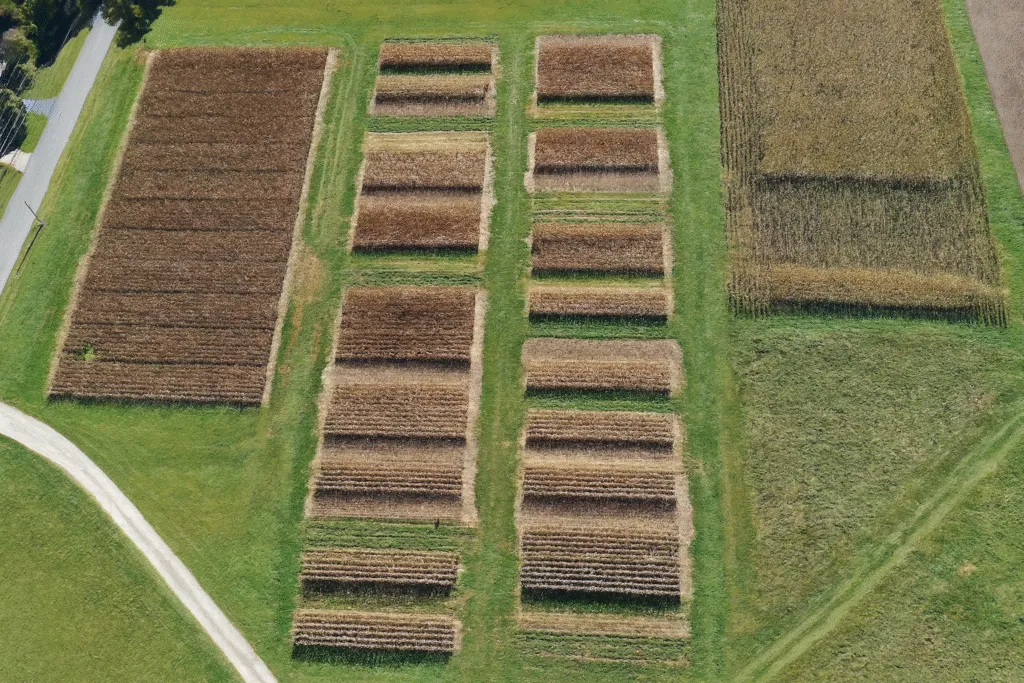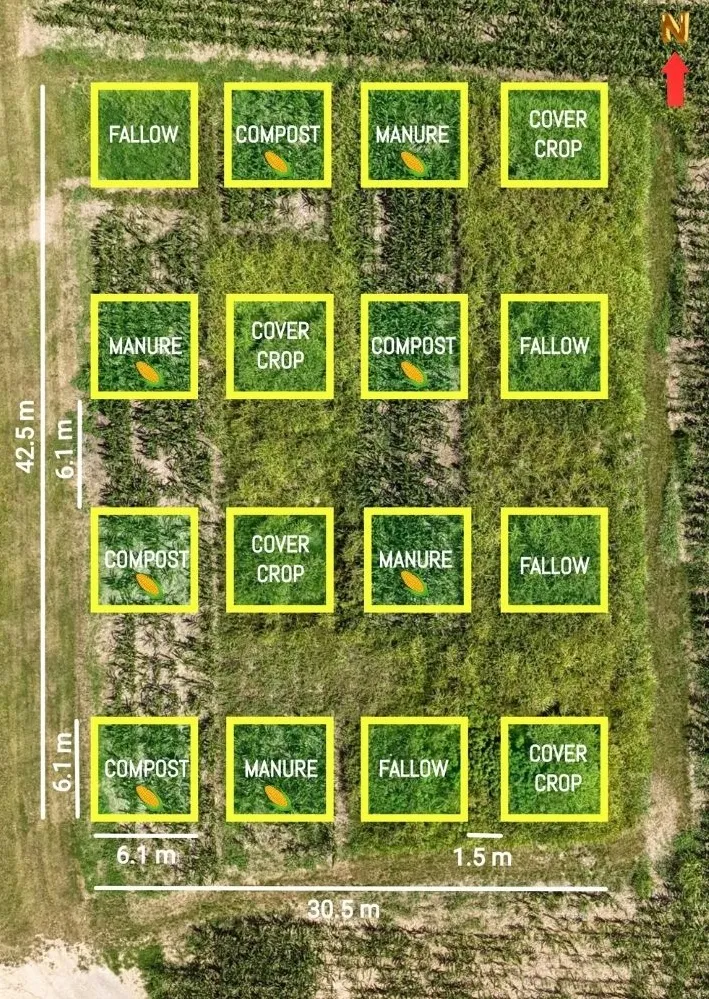Introduction: A Legacy of Soil Innovation in Ohio
Ohio has long been at the forefront of global agricultural innovation, leading the way in soil health research and sustainable farming systems. Two of its most remarkable contributions to global agricultural science are the Triplett–Van Doren No-Tillage Experimental Plots in Wooster and Hoytville and the Morgan Plots at the Waterman Agricultural and Natural Resources Laboratory in Columbus. Both sites have become living laboratories of soil conservation, resilience, and regenerative management — producing multi-decade datasets that have shaped conservation tillage and carbon management policies around the world.
The Historical Context: From Plowman’s Folly to the No-Till Revolution
The modern no-till movement traces its philosophical roots back to Edward H. Faulkner’s controversial 1943 book Plowman’s Folly. Faulkner began with a provocative opening line: “I do not know of any scientific reason for plowing.” At a time when plowing was seen as indispensable to agriculture, his argument — that plowing destroyed soil structure, reduced fertility, and led to erosion — challenged centuries of farming tradition.
Faulkner’s ideas were met with strong opposition, prompting further debate. The following year, a conservationist, teacher, and author named Walter Thomas Jack published a counterpoint book titled Furrow and Us, presenting two major justifications for plowing: weed control and nutrient release through decomposition of soil organic matter — an important consideration in the 1940s when synthetic fertilizers were not yet widely available.
The national debate grew so influential that TIME Magazine published a feature story contrasting the two books — Plowman’s Folly and Furrow and Us — symbolizing the ideological battle between tradition and innovation in soil management. Although Faulkner’s work was dismissed by many contemporaries, history proved him prescient. His ideas laid the intellectual groundwork for what would later become the no-tillage movement — a concept that Ohio State University scientists would help pioneer in practice two decades later.
The Triplett–Van Doren No-Tillage Experimental Plots: The Global Birthplace of No-Till Agriculture
A Revolutionary Beginning
The Triplett–Van Doren No-Tillage Plots, established in the early 1960s by Dr. Glover Triplett and Dr. Dave Van Doren at The Ohio State University, were among the first no-tillage agricultural experiments in the world. At that time, most farmers relied heavily on moldboard plows, which caused soil erosion, loss of organic matter, and compaction. Triplett and Van Doren’s radical question — “What if we stop plowing altogether?” — sparked an agricultural revolution.

Transforming Agriculture and Soil Health
Their findings demonstrated that leaving the soil undisturbed improved its structure, increased organic carbon content, enhanced microbial activity, and reduced erosion. These results established no-tillage as one of the most effective soil conservation practices worldwide. The plots, located in Wooster and Hoytville, became iconic research sites for studying the interactions between soil structure, crop rotation, and long-term productivity.
Six Decades of Impact
Now under the management of Dr. Leo Deiss, these experimental plots continue to advance knowledge about soil organic carbon sequestration, biodiversity, nutrient cycling, and crop resilience under climate stress. Over 100 peer-reviewed papers have originated from these sites, reinforcing their role as global references for conservation agriculture.
Visible Differences in the Soil
The visual contrast between tilled and no-tilled soils is striking. Tilled soils are lighter in color, loose, and more prone to erosion, while no-till soils are darker, aggregated, and biologically vibrant. These physical changes reflect decades of improved carbon retention, infiltration, and nutrient use efficiency — vital for building climate-smart agriculture systems.
The Morgan Plots: Long-Term No-Till and Organic Amendments in Columbus
Establishment and Purpose
In 1997, under the visionary leadership of Dr. Rattan Lal, one of the world’s foremost soil scientists and a pioneer of carbon sequestration research, Ohio State established the Morgan Plots within the Waterman Agricultural and Natural Resources Laboratory in Columbus. This long-term no-till experiment evaluates the combined effects of organic amendments (compost and manure), cover cropping, and no-tillage management on soil physical, chemical, and biological properties.

Site and Soil Characteristics
The plots are located on Crosby silt loam, a fine, mixed, mesic Aeric Ochraqualf typical of Ohio’s glacial till plains. The soil is moderately drained and highly responsive to management, making it ideal for long-term experiments on soil physical quality and nutrient cycling. The experiment spans a 42.5 m × 30.5 m field, arranged in a randomized complete block design (RCBD) with four treatments — fallow, cover crop, compost, and manure — replicated four times.
Organic Amendments and Fertility Management
Unlike short-term studies, the Morgan Plots focus on long-term sustainability rather than annual yield maximization. Compost and manure serve as primary organic inputs, applied annually based on nitrogen equivalence, ensuring balanced nutrient supply across treatments. Though the actual rates vary annually depending on material composition, the long-term average rates are approximately 15.33 Mg/ha for compost and 23.30 Mg/ha for manure.
- Compost — rich in carbon (40.78%) and moderate in nitrogen (2.71%) — is typically applied in early April.
- Manure — higher in nitrogen (4.50%) and moisture (85.9%) — is applied in early December.
To maintain uniform nitrogen availability across treatments, urea fertilizer (148 kg N/ha) is applied to the fallow and cover crop plots, ensuring fair comparison among systems.

Cover Crop Integration
The cover crop mixture includes perennial ryegrass (50%), annual ryegrass (30%), red fescue (10%), and Kentucky bluegrass (10%). Sown annually in May, these species protect soil from erosion, promote root-driven aggregation, and enhance microbial biomass. The continuous root presence mimics natural ecosystems and reinforces the no-till system’s regenerative potential.
Continuous Corn and No-Tillage Management
Compost and manure plots are continuously cultivated with no-till corn (variety: Steyer 1104 RR). For over 27 years, no mechanical disturbance has occurred — preserving natural soil horizons and structure. Herbicides are applied annually in April and June to manage weeds. Crop residues (stover, cobs, and husks) are retained as mulch, further enriching soil organic carbon.
Yield and Soil Health Trends
Over time, compost-amended plots have shown superior performance in soil structure, infiltration rate, and yield stability compared to manure plots. Grain yields in compost plots have ranged from 10.28 to 19.95 Mg/ha, while manure plots yield 12.54 to 15.36 Mg/ha. Bulk density has decreased, while total porosity, aggregate stability, and SOC have increased steadily — indicators of improving soil physical quality.
Why Long-Term Experiments Matter
The combination of the Triplett–Van Doren and Morgan Plots represents an unparalleled resource for scientists studying soil resilience, carbon dynamics, and sustainable intensification. Decadal-scale experiments reveal insights impossible to detect in short-term trials.
Key findings include: – Soil organic carbon accumulation is slow but steady under continuous no-till. After decades, SOC levels remain significantly higher than conventionally tilled systems. – Organic inputs amplify resilience by improving soil structure, microbial biomass, and water-holding capacity. – No-till and organic amendments enhance ecosystem services, including carbon sequestration, biodiversity, and nutrient cycling. – Yield stability under climate stress is consistently higher in compost and manure plots due to better moisture retention and nutrient efficiency.
Global Significance and Policy Implications
Ohio’s no-till legacy contributes directly to global climate goals. The lessons from these sites underpin strategies promoted by the FAO, UNFCCC, and IPCC, emphasizing carbon farming, soil regeneration, and sustainable intensification. These experiments demonstrate that soil is not a static medium but a living ecosystem capable of regeneration when managed wisely.
The long-term data also serve as a foundation for carbon credit programs and soil health indices, linking local practices to global sustainability frameworks.
The Path Forward: Building Resilient Soils for Future Generations
Both experiments underscore a simple truth: healthy soils are humanity’s greatest ally in combating climate change. As the world faces increasing pressure to feed a growing population under uncertain climate conditions, Ohio’s research legacy provides a roadmap for regenerative, climate-smart agriculture.
Future research at these sites aims to integrate soil biology, carbon modeling, remote sensing, and AI-based monitoring to quantify soil ecosystem functions at scale.
Dr. Lal and Dr. Deiss continue to inspire a new generation of scientists to explore soil’s capacity for renewal — proving that sustainable agriculture is not just possible, but essential.
References
– Faulkner, E.H. (1943). Plowman’s Folly. University of Oklahoma Press.
– TIME Magazine (1944). Science: Plow Row.
– Shrestha, R.K., et al. (2011). Long-term conservation tillage and organic amendments effects on soil physical properties. Soil and Tillage Research.
– Deiss, L. (2023). Long-term no-till plots sustain soil research for 60 years. CFAES Knowledge Exchange. https://kx-make.cfaes.ohio-state.edu/node/1437
– Munna, M. N. H., & Lal, R. (2025). Impacts of cover cropping and organic amendments on soil physical quality under temperate climate. Cogent Food & Agriculture, 11(1). https://doi.org/10.1080/23311932.2025.2467452
